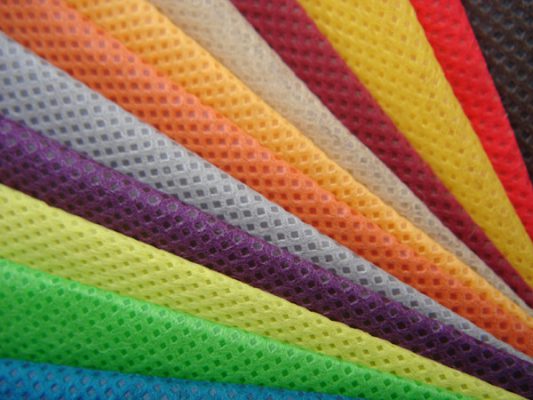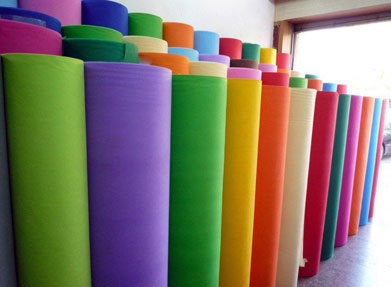With the current market of fabrics, different types of fabrics were introduced. Not only beneficial for life itself but also very economically beneficial. If you are passionate about and are interested in fabrics, then non-woven fabrics are probably too familiar with you.
But not necessarily you understand all the features and uses of this fabric where it brings! So do not wait any longer without Vinatoken to find out detailed information about this fabric!
A. What is nonwoven?

Non-woven fabric is a fabric made from synthetic resins with a number of other arbitrary ingredients to produce in accordance with the intended use. This compound is stretched into small strands. These fibers, after being formed, will not be woven together into fabrics, but they are bound together by chemical solvents (adhesives) or mechanical temperatures ( mechanical method: hot pressing) to create light and porous fabric products.
The process of creating this material is quite special and has its own characteristics. Because it is not woven in the usual way to create fabric, this fabric is called nonwoven.
Nonwoven fabric is now known as a new material but has been widely used in the market on the field since its launch.
B. Classification of nonwoven fabrics
Non-woven fabric is a fabric produced entirely on production lines, from spinning to combining them. Therefore, to classify this material, we will rely primarily on incense to create non-woven fabrics.
Here are some of the main nonwoven fabrics, which are widely applied in the market:
- Medical and medical fabrics: This is the main non-woven fabric used in the production of surgical clothing, protective clothing, disinfecting fabrics, masks, diapers, women sanitary napkins, etc.
- Interior fabrics: Non-woven fabrics manufactured for use as wall covering, table cloths, bed sheets, bed sheets, etc.
- Fabric type: lining, bonded lining, cotton slice, silk cotton, all kinds of artificial leather fabrics
- Industrial fabrics: filter materials, insulating materials, cement packages, geotextiles, upholstery fabrics, …
- Agricultural fabrics: crop protection fabrics, nursery fabrics, watering cloths, curtain insulating screens
- Other materials: sponge cloth, insulation, linoleum smoking, cigarette filters, bags and tea bags, ..
Each of these fabrics is created by the amount of component composition of the fabric and the different compounds according to the intended use. Therefore, this non-woven fabric is applied in most industries today.
C. Characteristics of nonwoven.
Nonwoven fabrics are made of chemical fibers bound together by chemicals, mechanical methods, using temperature or solvent treatment.
Although made mostly of chemicals, this material does not harm the health of users and the surrounding environment. Moreover, they also show their use thoroughly.
1. Diverse designs
The content of classification has clarified the usability of this non-woven fabric. Therefore, this fabric is designed to be diverse and popular depending on the purpose we use. You can see this fabric anywhere, with many different genres.
2. Identical in color
The characteristic of polypropylene materials (the main material that makes up non-woven fabric) is the color consistency. As we know, fabric is the favorite material for consumers, and color and shopping becomes extremely important.

And that is also the strength of this non-woven material. You can choose any color you like and especially this fabric has different brightness and brightness levels. This variety of colors will surprise you with this magical fabric
3. Ability to print on fabric
Constructed of compounds together in a well-thought-out process, non-woven fabric can be easily printed on fabric. Print images, logos, textures, … can print anything you want on the fabric.
However, the printing process needs to be handled professionally to ensure reasonable ink coverage, color and thickness. To receive products with natural and standardized images.
4. Cost of fabric
The price of this fabric is listed as a low-cost material. The uses that this fabric brings are not less at all, right? Especially you can find this cheap non-woven fabric very easily because of its popularity!
5. Environmentally friendly
“Environmentally friendly” is the slogan of this non-woven fabric. Nonwoven fabric has been confirmed by the Ministry of Health as capable of biodegradation in the natural environment. Decomposition time only takes a few months. Therefore, non-woven fabric does not pollute the environment and is completely non-toxic to the health of users.
Above is the information you need for nonwoven fabrics. Hope the above article will bring you lots of useful information!

